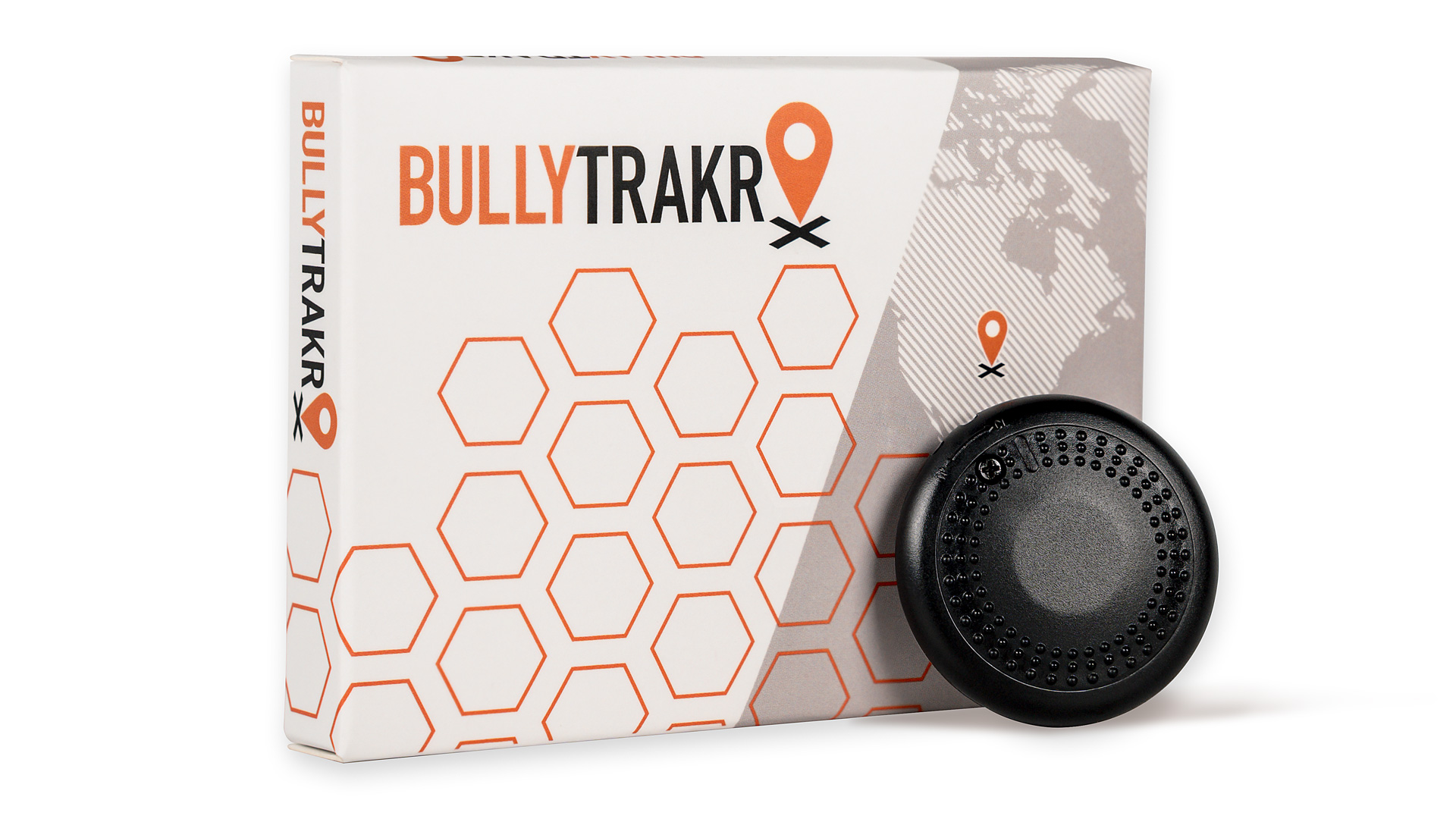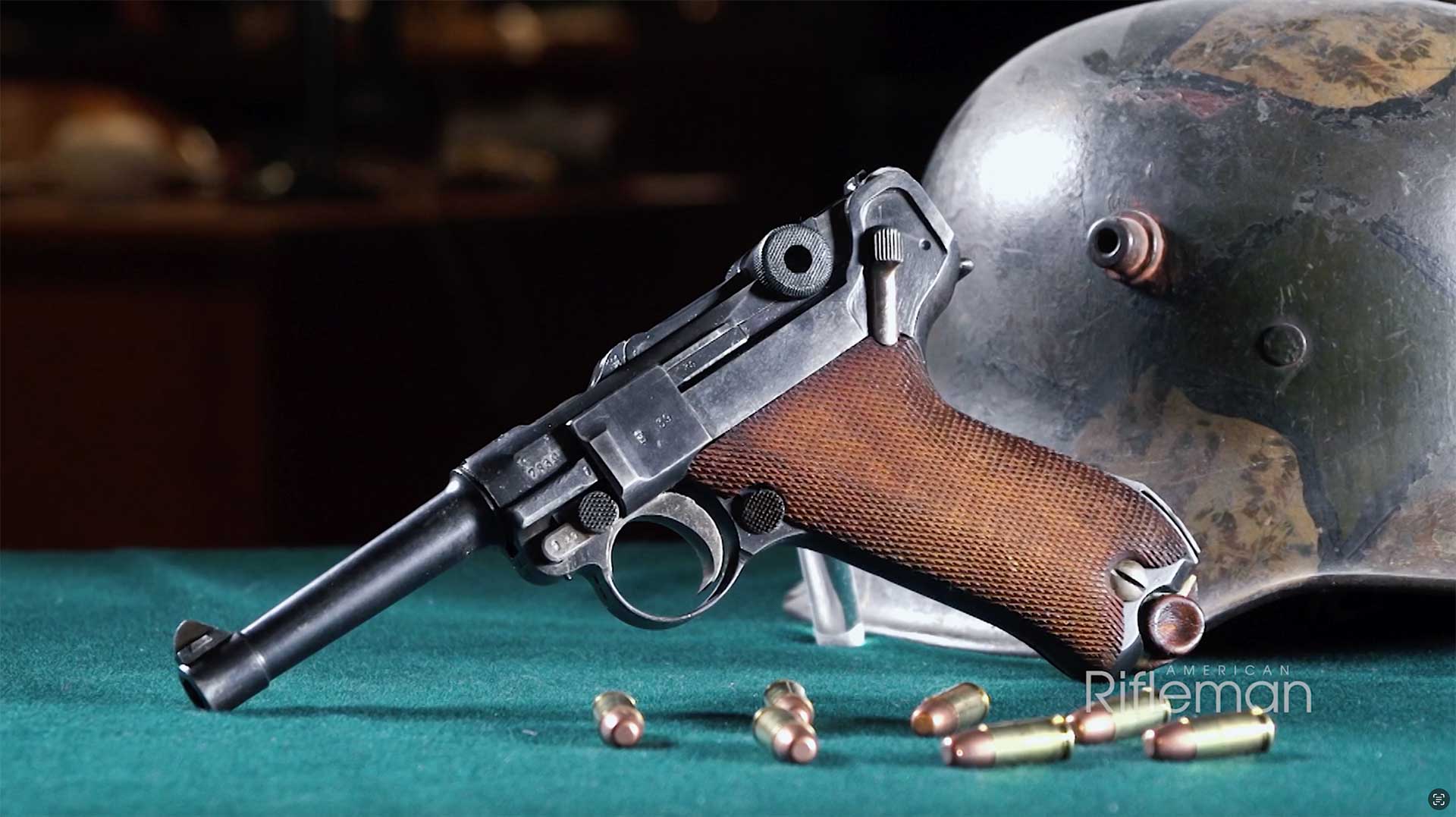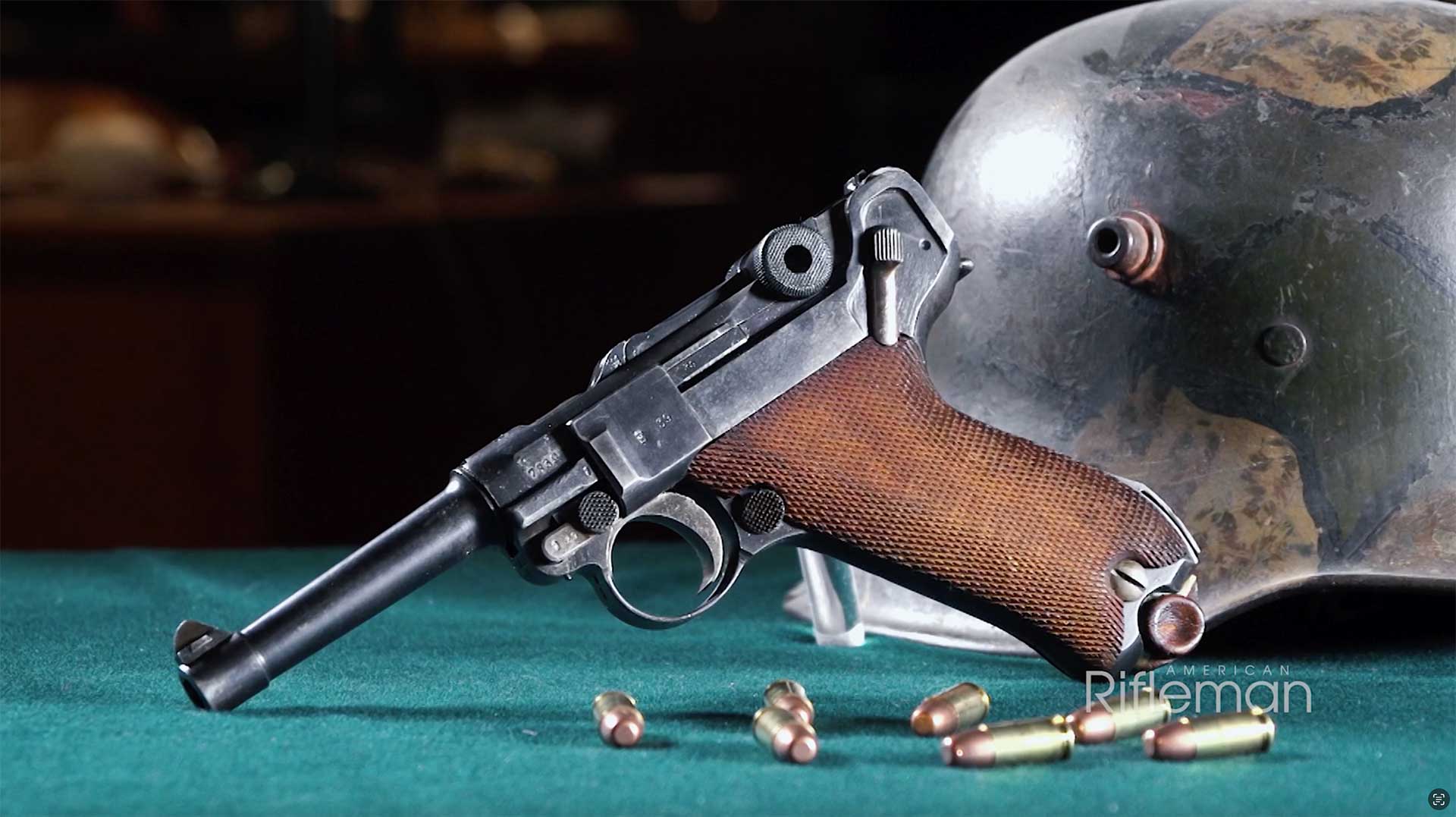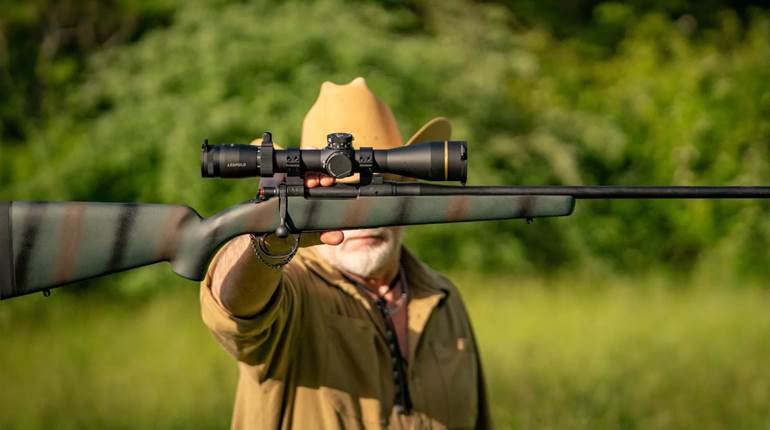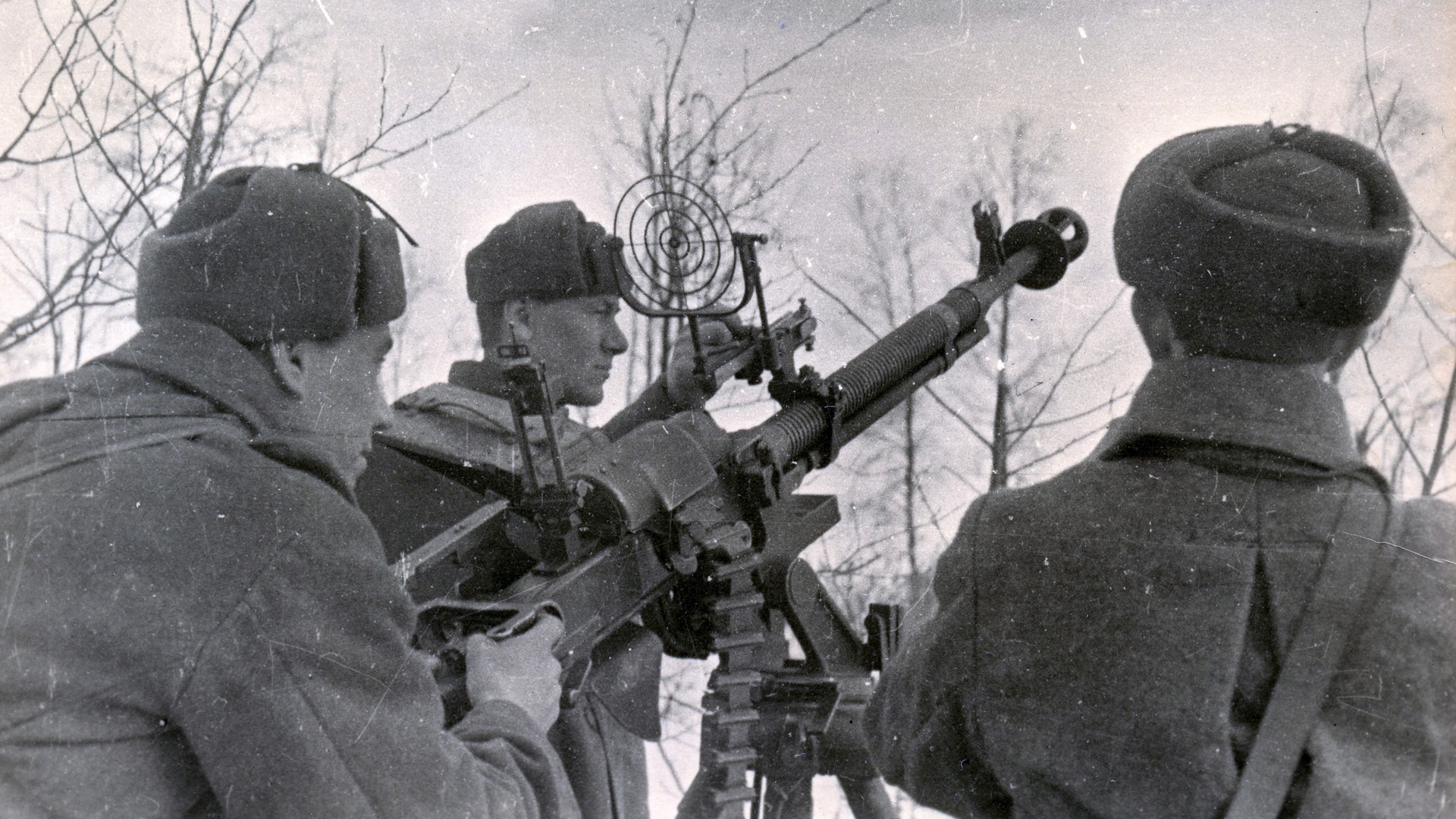
In the late 1920s, the Soviet Red Army was looking for a home-grown, multi-purpose heavy machine gun (HMG). The original “DK” HMG was designed by Vasily Degtyarov (D for Degtyarov, and K for Krupnokalibernyj — heavy machine gun). The DK borrowed much from the successful DP-27 light machine gun design in 7.62x54 mm and super-sized it to 12.7x108 mm. Introduced in small numbers during 1933, the DK was bedeviled by a troublesome 30-round drum magazine mounted on top of the gun. Arms designer Georgy Shpagin joined the team and revised the ammunition feed to a far more reliable belt-fed system. The revised gun was titled “DShK-38.” As the feed system was created by Shpagin, the official designation denotes this with “Sh” in the name. The first letter stands for Degtyarov, the originator of the design, and the fourth letter stands for “heavy.” With proper credit and nomenclature attached, the Red Army had its own .50-cal. MG on the eve of World War II.
 A DShK serving as AA defense for a Soviet armored train. Photo courtesy of author’s collection.
A DShK serving as AA defense for a Soviet armored train. Photo courtesy of author’s collection.
Americans Discover The DShK
While German troops became familiar with the big DShK on the Eastern Front during World War II, few Americans knew anything about it. The Red Army rarely shared any information on its own firearms with the western Allies during the war. Russian weapons expert (and NRA member) Roger Marsh created a pair of self-published books about Soviet small arms during the early days of the Korean War. In Weapons 1: Overture to Aggression, A pictorial survey of Russian small arms 1891-1943 (published in 1950), Marsh details the American military’s lack of familiarity with Soviet military firearms, a subject he was quite familiar with:
“Although there’s been little enough reported on the subject, it is rumored that the North Koreans held classes for their men in the use of US weapons. It’s logical: Communist activists are expected to know the use of their own weapons and those of their enemies, and the North Koreans, of course, found added incentive in the fact that they expected to have a quick brawl US-armed South Koreans. I wonder if US armed forces, especially the enlisted men, are getting comparable instruction in the use of Soviet and other foreign equipment.
The Germans were publishing extensive information on Russian weapons in 1941-1943, and it is 1950-51 now. In the Armorers Section, ORTC, Aberdeen Proving Ground (headed by Captain Goodwin and later Lieutenant Chalmers), we set up and wrote lesson plans for, and wrote the instructional material for, repaired or rebuilt the material for and trained other instructors for, a foreign material course. Maybe it saved some American lives…we did the best we could. Pardon the personal notes … The services have had a seven-year start anyway. I hope they’ve done something with it.”
 A good view of the DShK 38, revised from the original 1931 design to incorporate a belt-feeding system. Photo courtesy of author's collection.
A good view of the DShK 38, revised from the original 1931 design to incorporate a belt-feeding system. Photo courtesy of author's collection.
As per the DShK, Marsh noted:
“The big 1938 gun was a considerable success and still continues in service. Not exclusively an Army weapon, it is also used aboard ships for anti-aircraft use. The big Degtyarov was mounted on almost anything big enough to carry it — or to tow it.
The Degtyarov feed and belt for the 12.7mm cartridge are evidence of acceptance of the fact that combining gas operation and belt feed in a large-caliber gun generally necessitates an attached feed mechanism (with belt to match) to remove the rounds from the belt and present them for loading into the chamber. When you can start from scratch and design gun, feed, cartridge, and belt, each with the others in mind, the design generally works out all right.”
Experience cures many ills, and the Soviets had considerable time invested in using the DShK in combat by the Korean War. Marsh notes that: “The quality of Russian ammunition tended to improve as caliber increased.”
 A DShK captured by German troops during the 1941 invasion of the Soviet Union. The wheeled mount with an armored shield for infantry use weighed 346 lbs. This was the least common configuration for the DShK in World War II. Photo courtesy of author's collection.
A DShK captured by German troops during the 1941 invasion of the Soviet Union. The wheeled mount with an armored shield for infantry use weighed 346 lbs. This was the least common configuration for the DShK in World War II. Photo courtesy of author's collection.
In his The Machine Gun, Volume II (1952), Lt. Col. George M. Chinn describes the DShK:
“In the DShK rounds are stripped from the links in the rotary feed which positions them in a feed mouth from which they are stripped by the bolt in its forward travel. The gun has on the receiver a leaf sight for fire against ground targets and can also use a Model 1938 or Model 1941 sight for fire against aircraft or moving surface targets including those with thin-skinned armor.
The DShK is a very heavy gun, and since the barrel cannot be readily removed for manhandling, a wheeled mount is provided. The complete weapon makes an excessive load even for two men. Barrel removal is accomplished by means of a wrench, accordingly, there are shallow grooves near the muzzle. The barrel is screwed into the receiver until its stump rests against the inside shoulder of the receiver. When it is in the correct position lines on the barrel and receiver coincide.”
 Mounted atop a Polish (Warsaw Pact) T-54 tank for use by the commander, this DShK features the simplified muzzle brake (patterned after the Polish Wz. 35 anti-tank rifle) that was introduced in 1944. The firearm is awkwardly massive in this mounting. Photo courtesy of Polish National Archives.
Mounted atop a Polish (Warsaw Pact) T-54 tank for use by the commander, this DShK features the simplified muzzle brake (patterned after the Polish Wz. 35 anti-tank rifle) that was introduced in 1944. The firearm is awkwardly massive in this mounting. Photo courtesy of Polish National Archives.
Even though the U.S. military was highly familiar with the DShK by the end of the Korean War, the “Red Fifty” seemed to make little impression. American troops were comfortable in the fact that the .50 Browning M2 was superior to the DShK. While that is true, then and now, American military planners overlooked the obvious: Communist insurgents now had a heavy machine gun of their own, available for use in a wide range of conflicts brewing around the globe. Also, with the advent of the Chinese Type 54 copy of the DShK, even more of the big machine guns would be in service on the other side.
|
Comparing The Browning M2 .50-Cal. MG And The DShk |
||
|
|
Browning .50-cal, 12.7x99 mm |
DShK, 12.7x108 mm |
|
Weight |
62 lbs. (gun) 128 lbs. (gun, tripod and T&E) |
75 lbs. (gun) 346 lbs. (gun on wheeled mount) |
|
Muzzle Velocity |
2,910 f.p.s.
|
2,800 f.p.s. |
|
Maximum Rate Of Fire |
600 RPM |
600 RPM |
|
Armor Penetration With World War II- and Vietnam-era AP ammo |
0.75” at 550 yards |
0.04” at 550 yards |
Most U.S. ordnance intel documents during the 1960s make little mention of the DShK. I continued digging and found a more complete description in Small Arms Identification and Operation Guide—Eurasian Communist Countries, produced by the Defense Intelligence Agency in June 1973:
THE 12.7-MM DEGTYAREV HEAVY MACHINE GUNS
(DShK-38 AND THE MODEL 38/46 OR DShKM)
Eurasian Communist countries use the Soviet-designed Degtyarev 12.7mm heavy machine guns as antiaircraft and anti-vehicular weapons. Warsaw Pact countries use this weapon almost exclusively on vehicular mounts, whereas the Asian Communist countries use it mostly on its ground mount. The original DShK-38 machinegun has a complicated rotary feeder that was superseded by a conventional shuttle-type feeder in the Model 38/46.
Several other changes in the Model 38/46 made most of the parts non-interchangeable between the two guns. The Model 38/46 is also known as the DShKM. The People's Republic of China produces the Model 38/46 as the Type 54 heavy machinegun. These guns can be identified by the Chinese characters stamped into the receiver behind the feeder. Late PRC guns have smooth barrel exteriors. A quadruple mount version of the M38/46 is produced in Czechoslovakia.
The 12.7 mm Degtyarev heavy machinegun is an automatic, gas-operated, belt-fed, tripod- or vehicle-mounted weapon firing from the open-bolt position. The Model 38/46 can be adapted to right- or left-hand feed, and it has a changeable barrel. Ammunition is fed from 50-round capacity metallic-link belts. The Degtyarev 12.7 mm machine guns fire the 12.7 x 108 mm cartridge. The mount can be used for ground fire and is easily converted to antiaircraft use.
 The Germans used captured DShK MGs in the AA role. This example was mounted in the bed of a light truck to provide mobile protection for armored columns. Photo courtesy of author’s collection.
The Germans used captured DShK MGs in the AA role. This example was mounted in the bed of a light truck to provide mobile protection for armored columns. Photo courtesy of author’s collection.
Fighting American helicopters In Vietnam
In the early days of the Vietnam War, the Viet Cong (and sometimes NVA troops) used Browning .50-cal. M2 machine guns captured from ARVN forces and taken from downed aircraft. While effective, the big Browning machine guns were difficult for the guerrilla troops to keep working, and it was difficult to secure ammunition. Beginning in mid-1964, the VC began to receive a number of DShKM guns (Soviet and Chinese types) and a relatively reliable supply of ammunition.
 Cold Warrior: An early DShK captured from the North Koreans and examined by American troops during 1950. Photo courtesy of author’s collection.
Cold Warrior: An early DShK captured from the North Koreans and examined by American troops during 1950. Photo courtesy of author’s collection.
Apparently, the Chinese began to supply more of their Type 54 copy of the DShK HMG. A USMC report from 1965 states:
“The VC appear to be making some progress toward standardization of types of weapons, but not by origin or manufacture, in their Main Force units … Some heavy weapons companies are equipped with 12.7 mm or .50 caliber machine guns. There has been a recent increase in the capture of Sino-Soviet Bloc weapons, ammunition, and explosives from the VC. The majority of these have been Chicom in origin.”
 Testing the DShK in Korea during 1953. Photo courtesy of the U.S. Army Ordnance Museum.
Testing the DShK in Korea during 1953. Photo courtesy of the U.S. Army Ordnance Museum.
Documents from the 1st Marine Division dated April 1966 describe that captured U.S. Browning .50-cal. machine guns were modified for use on the Soviet DShK tripod.
“Each Main Force and North Vietnamese unit have an anti-aircraft section of varying size and strength. The 1st Regiment has been reinforced with the 195th Anti-Aircraft Battalion (NVA) with 18-12.7 mm machine guns. North Vietnamese infantry battalions are known to have as many as nine of these weapons organic to them. Main force Viet Cong battalions usually have 3-6 of these weapons or modified .50 cal machine guns in their arms inventory.”
The same report describes the DShK/Type 54's practical rate of fire as 125 rounds per minute.
 North Vietnamese troops with a Chinese Type 54 HMG. Photo courtesy of author’s collection.
North Vietnamese troops with a Chinese Type 54 HMG. Photo courtesy of author’s collection.
The DShK machine guns quickly became the most common “helicopter killer” available to communist forces in southeast Asia. They offered the range and, more importantly, the striking power to destroy all types of American helicopters, particularly with armor-piercing incendiary ammunition. Most helicopters were lightly armored in some spots, but unfortunately for the UH-1 Huey crews, their fuel tanks were not self-sealing—the big AP-I rounds were known to explode a Huey’s fuel tanks. Meanwhile, if a crewman was hit by a 12.7 mm round, it often resulted in death or a fully incapacitating wound.
 A Viet Cong Type 54 HMG captured by the USMC in March 1966. Photo courtesy of the National Archives And Records Administration (NARA).
A Viet Cong Type 54 HMG captured by the USMC in March 1966. Photo courtesy of the National Archives And Records Administration (NARA).
While the DShK guns were never available in the numbers they desired, the Viet Cong made the most of those they had. Most of these guns were dug in and well camouflaged, with three machine guns covering prospective landing zones—left, right and center. Troop-carrying helicopters (“Slicks”) were normally attacked when they almost touched down, giving the Slicks little chance to maneuver or climb out of the danger zone. For most of the Viet Cong formations, and several NVA units, anti-aircraft training was difficult to come by. Consequently, countermeasures by U.S. rotary wing aircraft were often effective. Even so, more than 2,000 U.S. helicopters were brought down by enemy action during the Vietnam War—the DShK had a lot to do with those kills.
 A captured DShK on display at Ham Ngai, Vietnam in February 1971. Photo courtesy of author’s collection.
A captured DShK on display at Ham Ngai, Vietnam in February 1971. Photo courtesy of author’s collection.
Jim Wagner, a UH-1 helicopter crew chief and door gunner with the 9th Aviation Battalion of the 9th Infantry Division in Vietnam, shared his experiences of being fired upon by the Communist 12.7mm MGs:
“The VC seemed to have a fair number of the big Soviet DShK MGs, or the Chinese communist copy, the Type 54. These were very heavy–the two wheeled mount was almost 350 pounds, but the VC were never afraid of hard work. Many of these guns had a large AA sight and were found either on a tripod or the wheeled mount. The 12.7mm rounds were powerful and they were quite deadly against Allied aircraft, particularly helicopters.
As I remember, the DShK had a slant range of about 1,000 meters and a horizontal range of about twice that. Although it had a slower rate of fire, overall, it was comparable to the US M-2 .50 caliber heavy machine gun. Even at a distance the sound of either of these heavy machine guns commanded instant respect. As a Huey Crew chief during the Vietnam War, I can honestly say that the "Dushka" basically scared the hell out of me. Not only could it out-range us, but if one of those big green tracer slugs hit you, you stayed hit. It also could do an awful lot of damage to the Huey itself.
About the only advantage we had was the fact that both the Viet Cong and the NVA usually lacked formal training in shooting at a fast-moving helicopter. Generally, they didn't give their target enough lead. So thankfully, the bulk of the rounds ended up behind or below us. Now and then our tail boom would take a hit. As soon as we took fire from a heavy automatic weapon we would try and dive below tree top level and pour on the coal—to "Get out of Dodge" as fast and as far as possible. Lower altitude and speed were preferable to climbing above 3,000 feet, to limit our exposure time to the heavy fire.”
 Good details of the Type 54’s shoulder supports and AA sight. Photo courtesy of author’s collection.
Good details of the Type 54’s shoulder supports and AA sight. Photo courtesy of author’s collection.
The Soviet-Afghan War & After
During the war in Afghanistan (1979-1989), the Mujahideen were able to obtain a good number of Chinese Type 54 HMGs, supplemented with the modernized DShK-M (DShK 38/46) and early DShKs captured from the Afghan army and Soviet forces. The normal Soviet practice of coating the DShK ammunition with a thin layer of oil proved detrimental in the dusty Afghan environment. Consequently, jams became a regular problem.
Soviet tanks were normally equipped with a DShK-M, but the small turret of the T-62 required the loader to exit the vehicle and stand on the rear deck to fire the machine gun, placing the gunner in danger of sniper fire. Some locally made gun shields were provided to help ease this problem.
 Further details of the Type 54’s AA sight. This example was used by Afghan rebels against Soviet troops in 1989. Photo courtesy of author's collection.
Further details of the Type 54’s AA sight. This example was used by Afghan rebels against Soviet troops in 1989. Photo courtesy of author's collection.
Watching the helicopter war in Vietnam, the Soviets developed their heavily armored Mi-24 Hind attack helicopters to be resistant to the fire of U.S. .50-cal. machine guns. Consequently, the Mi-24s were able to shrug off fire from the Mujahideen’s DShK machine guns. However, the Mi-8 transport helicopter was vulnerable to 12.7 mm fire, and the Afghan fighters were able to down several during the conflict.
During 1988, the Irish Republican Army managed to smuggle two DShKs in from Libya, and these were used to bring down a British Westland Lynx helicopter in June. In October 1989, the IRA used a DShK to destroy an RUC constabulary armored truck. Then, in February 1990, the IRA’s DShK machine guns struck again when a British Gazelle helicopter was shot down. In February 1991, another Lynx was badly damaged and forced down. The IRA acquired more DShKs and created a handful of gun-trucks capable of engaging helicopters and light armored vehicles. The 12.7 mm machine gun continued to be a powerful tool for insurgent forces.
 The DShK continued to be a reliable helicopter killer during the Soviet-Afghan War. This example is seen in use by Afghan rebels during early 1990. Photo courtesy of author's collection.
The DShK continued to be a reliable helicopter killer during the Soviet-Afghan War. This example is seen in use by Afghan rebels during early 1990. Photo courtesy of author's collection.
In Africa, Central Asia and the Middle East, the DShK is often mounted aboard a pickup truck, light cargo truck or modified SUV to create a “technical.” What these vehicles lack in crew protection, they make up for in mobility and firepower.
In current war in Ukraine, the “Dushka” continues to fight. After the initial Russian invasion of 2014, the Ukrainians opened up their Soviet-era arsenal and converted a number of DShKs from the traditional HMG configuration to a full-auto anti-material rifle. Key to this conversion was a large multi-baffle muzzle brake from the NSV machine gun, which is apparently quite effective. The new gun was given a shoulder stock, a good quality bipod, pistol grip and a conventional trigger. These hybrid MGs have a low profile and accuracy is considered good up to 800 meters or so. Reports are that the recoil has been deemed acceptable. The modified DShKs continue on in service in small numbers.
 A Chinese Type 54 guarding an oil platform, captured from Iranian forces. Photo courtesy of the National Archives and Records Administration (NARA).
A Chinese Type 54 guarding an oil platform, captured from Iranian forces. Photo courtesy of the National Archives and Records Administration (NARA).
With the proliferation of Russian drones (including the Iranian-made Shahed drone) used against battlefield and civilian targets, the Ukrainians have been successful creating mobile fire teams that leverage vintage machine guns. Mounted on pickups and other light trucks, these units use DShKs and even Maxim PM 1910 MGs in this role — defending against low-cost drones with cost-effective machine gun fire as opposed of using extremely expensive anti-aircraft missiles.
The more things change, the more they stay the same. This appears to be true when discussing .50-cal. machine guns, no matter where they were born.
Additional Photographs: The Czech Vz. 53 (also called M53 by NATO) coupled four DShK MGs on a light chassis for a mobile, low-altitude AA system. Many of these were used by Cuba, Egypt, Syria, Iran and Angola. This example was captured by US forces during the invasion of Grenada during October 1983—where a Vz. 53 is thought to have shot down a UH-60 Blackhawk. Photo courtesy of the National Archives and Records Administration (NARA).
The Czech Vz. 53 (also called M53 by NATO) coupled four DShK MGs on a light chassis for a mobile, low-altitude AA system. Many of these were used by Cuba, Egypt, Syria, Iran and Angola. This example was captured by US forces during the invasion of Grenada during October 1983—where a Vz. 53 is thought to have shot down a UH-60 Blackhawk. Photo courtesy of the National Archives and Records Administration (NARA).
 The DShK 38 on its wheeled infantry mount with an armored shield. Photo courtesy of the National Archives and Records Administration (NARA).
The DShK 38 on its wheeled infantry mount with an armored shield. Photo courtesy of the National Archives and Records Administration (NARA).
 The DShK 38 set up for anti-aircraft fire. Photo courtesy of the National Archives and Records Administration (NARA).
The DShK 38 set up for anti-aircraft fire. Photo courtesy of the National Archives and Records Administration (NARA).
 Details of the DShK 38 feed system. Photo courtesy of the National Archives and Records Administration (NARA).
Details of the DShK 38 feed system. Photo courtesy of the National Archives and Records Administration (NARA).
 Details of the DShK’s M1943 anti-aircraft sight. Photo courtesy of the National Archives and Records Administration (NARA).
Details of the DShK’s M1943 anti-aircraft sight. Photo courtesy of the National Archives and Records Administration (NARA).
























